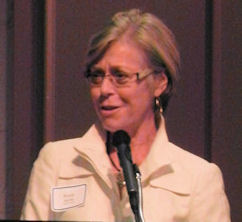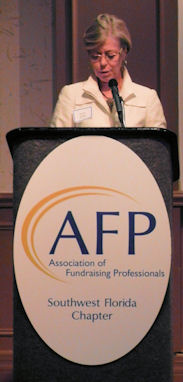 I just read Score! cover to cover and here’s why I think you should too…
I just read Score! cover to cover and here’s why I think you should too…
With Score! Peter Wylie and Kevin MacDonell have written a highly accessible book that works effectively as a beginner’s guide to driving your organization’s decision-making with fundraising analytics. It’s no surprise to those of us in the prospect development field. Peter has been writing entertaining and informative books and articles for years and Kevin’s CoolData blog is encouraging and full of easy-to-understand visuals. Both of them write about personal experiences that nicely demonstrate the ideas and concepts in the book.
This is not a do-it-yourself manual. Peter did that already with his book Data Mining for Fund Raisers. This book is for leadership and for aspiring analysts alike who want a guide to getting something great to happen. No-one feels like a fool for not knowing how analytics works (or even how to define it) and although Peter calls out leadership’s common foibles, an ambitious leader can easily swallow that pill because it helps him navigate past the pitfalls.
The book is conveniently grouped into three sections so you can decide what you want to read. Part one, Becoming a Data-Driven Organization, discusses how analytics can help you make decisions that lead to success. Part two, Your Data Driven Job, discusses what it’s like to pursue analytics in your prospect development career. Part three is devoted to case studies.
Part one launches with scenarios that are happening in advancement offices every day, but when highlighted in a short paragraph make one blush with embarrassment. You also get great information on obstacles you are likely to encounter as you seek to invest in analytics and a helpful discussion about whether to hire someone new or train an existing employee.
One of the salient points made in the book from start to finish is that fundraising analytics is all about valuing affinity – the relationship someone has with your organization. Wealth ratings and other external data is nice, but only works really well when paired with affinity. The wealth screening companies have drowned the marketplace with sales, advertising, and educational content that does not shine such a bright spotlight on using analytics to find and leverage the conversation your prospects and donors are having with your organization as recorded in your databases. Score! gets you back on track.
If you are facing the challenge of clueless leadership that does not value data, then this first section falls a bit short. Given Peter’s years of consulting I was hoping for a few guerrilla tactics and approaches to persuading leadership that analytics is the new, shiny object every leader has to use. Instead the authors give us brief vignettes of some of the good stories where leaders model the kind of behavior that encourages analytics efforts to succeed.
Part two is where the aspiring analyst gets some very thoughtful and perceptive advice about the skills needed to take on these kinds of tasks. By including a chapter on soft skills, and putting it first, there is a clear message. You can be awesome at analyzing data, but unless you can translate your results into information others can use and understand, you are not likely to achieve success. Kevin’s CoolData blog is a living example of good and useful presentation. As a bonus, Kevin and Peter share their personal stories on how they came to analyze nonprofit data for a living.
Part two also has some gems that surprised me and made me think more deeply. Although I have been using the term fundraising analytics as an umbrella term here, Kevin and Peter give you an education about the difference between data mining and analytics. You also get some terms and techniques defined – a few fundamentals. But don’t worry! The authors walk you through some step-by-step starter tasks. The highlighted quote is just one of many that should assure you that you won’t break anything by trying.
“Don’t let missing, incomplete, or suspect data stop you from jumping right in and trying to work with it just as it is.” (p.91)
Part three is a series of case studies. As the authors emphasize, these are not do-it-yourself instructions. They are case studies that illustrate the types of questions you might ask your data and some answers others have found. Kevin and Peter do a great job here of outlining the steps they took and then going into detail about what happened as a result. These case studies will give you big picture ideas to guide you as you craft your own projects. They are helpful to leadership too because they demonstrate winning applications.
In particular I was intrigued by the call center data case studies. And, of course, just a few days after reading the book a fundraising colleague described to me how she does not give to her alma mater and will not give to them, yet they have been calling, emailing and writing her repeatedly each year. She just rolls her eyes.
A huge shift is just beginning to happen as younger generations earn and accumulate income and wealth in an era of rapid changes in information technology that is creating new and changing expectations for communicating. The popular LifeHacker blog wrote a recent post with this title: How Can I Donate to Charity Without Getting Harrassed By Them Later?
It will be those organizations that listen to the conversations in their data and respond to them that will win those donors’ trust…and dollars. Score! is written about analytics in higher education, but the lessons apply equally to human services organizations. Don’t miss out. Buy, read and Score!
Don’t believe me? Read what Susan Bridgers of APRA Carolinas has to say about it!
Want to catch up on the most current buzz? Search the Twitter hashtag: #scorethebook
 The secret trick to analyzing your donor information is to understand your fundraising fundamentals. Remember the fundraising pyramid?
The secret trick to analyzing your donor information is to understand your fundraising fundamentals. Remember the fundraising pyramid?




